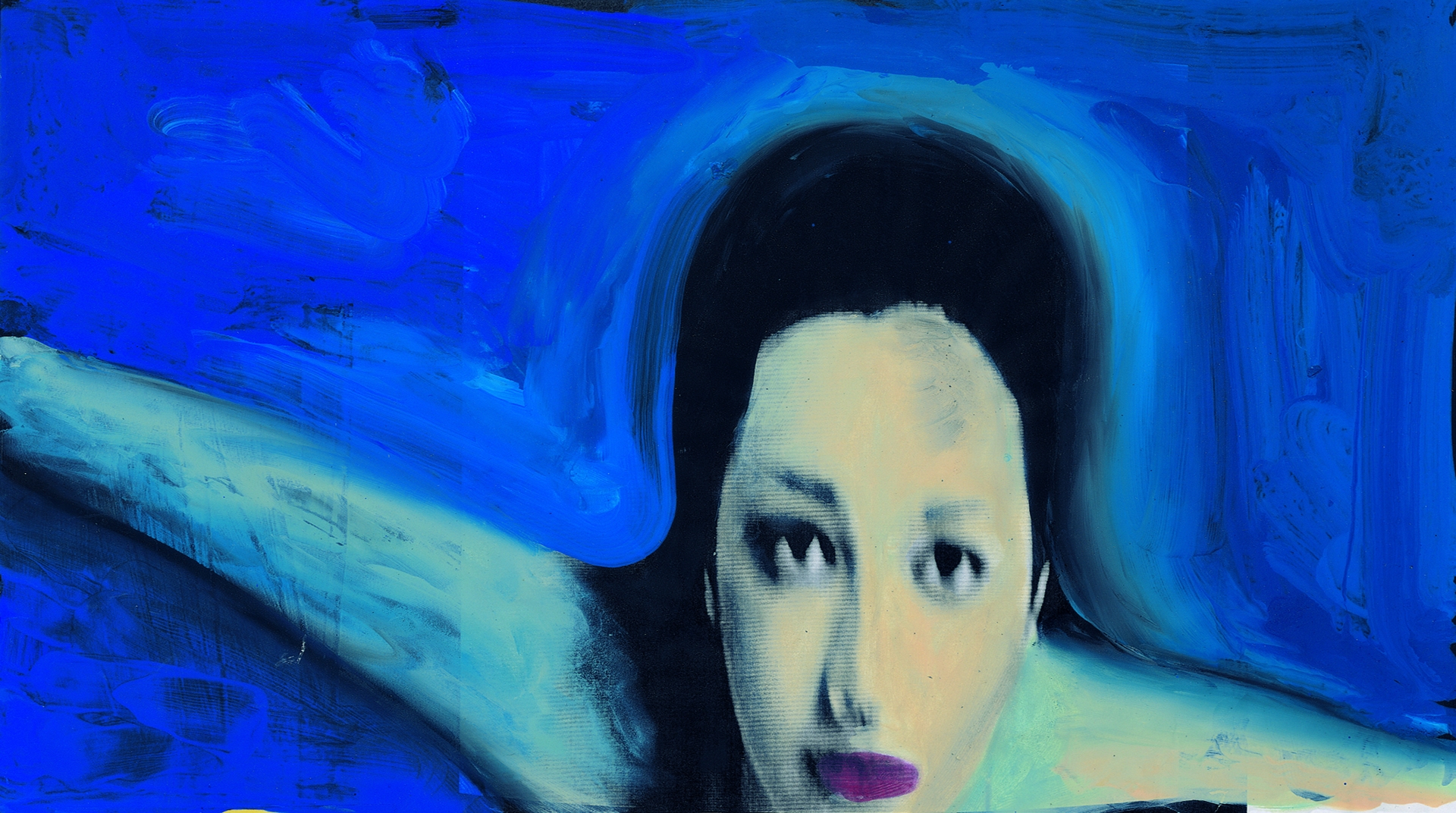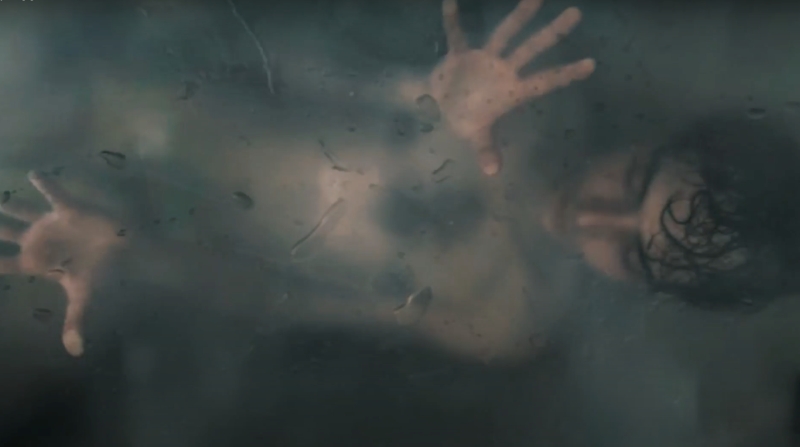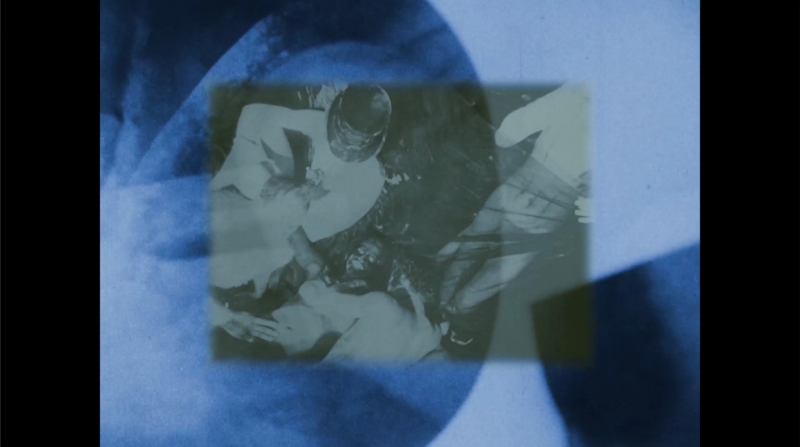LA BIENNALE DI VENEZIA con Asia Argento e Marco Giusti
sigla per la 56^ Mostra internazionale d’arte cinematografica di Venezia, 1’, 1999
LA PISTA con Simona Mulazzani
produzione Mixfilm, 2’, 1991
LE CRIMINEL
produzione Trans Europe Film, La Sept ARTE, CNC, 5’, 1993
PINOCCHIO
produzione Toccafondo, La Sept ARTE, 6’, 1999
ESSERE MORTI O ESSERE VIVI È LA STESSA COSA dedicato a Pier Paolo Pasolini
produzione Tele+, Fandango, 4’, 2000
LA PICCOLA RUSSIA
produzione ARTE France, Fandango, Studio nino, 16’, 2004
UNDERGROUND LOVERS per C’MON TIGRE
4’, 2019
DREAMLAND con Pasquale Catalano
produzione Voxfarm, 14’, 2021
LUCIANO PAVAROTTI La stella
Albedo production, sigla, 1’, 2022
LA VOCE DELLE SIRENE
Miyu production, ARTE France, 50 N, 15’, 2023
Gianluigi Toccafondo is an artist in the fullest sense of the term: he makes his works on his own, drawing by hand thousands of film frames every time. With this artisanal approach, he expresses himself, his inner world, with as much aesthetic freedom as possible. Even when he works on commission for commercial companies or institutions (as is the case with the Levi’s and Sambuca Molinari commercials, with the opening themes of Rai TV shows and the Venice Film Festival, as well as the distribution company Fandango), his style and language remain unparalleled. His original audiovisual poetics reaches a wide audience, as it often departs not only from his drawings but also from ‘found’ images, such as old movies, photographs, photo stories, comics, and ads. He is also an illustrator (for example, Goffredo Fofi’s magazines Linea d’ombra and Lo Straniero, and Enrico Deaglio’s Diario) and a multimedia artist. He contributed to the making of Matteo Garrone’s Gomorra as his assistant director. The Pesaro Film Festival has always appreciated and called attention to his work.
Born in the Republic of San Marino in 1965, he grew up in the Pesaro countryside and obtained his diploma from the Istituto Statale d’Arte Scuola del Libro in Urbino, like many other directors of Italian animation film. The images of his films evolve from a dynamic deformation of the shapes in a frenzied, pervasive mutation. This is how La coda (1989), La pista (1991), La pista del maiale (1992), and Le criminel (1993) are structured. Pinocchio, made in 1999 with original music by Mario Mariani (who was to work with him, among others, for the Venice Film Festival opening theme), is loosely based on the story and character of Collodi’s puppet. Here, thanks to an articulate composition of diverse suggestions and stimuli, Toccafondo transformed Pinocchio’s emblematic tale into an open journey, an adventure of cognition that deals with shadows, obsessions, and hopes, and is contaminated with universal archetypes (the metamorphoses, the belly of the whale), with early cinema, Buster Keaton, Totò – figures often mentioned in the cinema of Toccafondo – becoming an endless dream filled with magic. In 2003, he made La piccola Russia, an unusually ‘long’ film – compared with the director’s average – of 16 minutes, in black-and-white, co-produced by Arte France and Fandango. A deep-reaching, troubling work that marks a sharp turning point towards storytelling. The narrative is fairly morbid: it refers to a distorted erotic imagery and the bipolar lifestyle of a character continually switching from the countryside to the Adriatic coast. About this, Toccafondo declared, “I am not kind to my region. I like to do things there, but when I shoot, I’m overwhelmed by all the misery and melancholy of the world. In winter, we have the fog. In summer, merciless sunshine all day. We don’t have sunsets, because the sun sets on the other side. The lights are clearcut and sharp, the sea milky. In La piccola Russia, there is a bucolic beginning and then violence breaks out, relentless, and could go on forever.”
More recently, having collaborated with the art and music collective C’Mon Tigre, he has made several visual interventions and performances, and then the music video Underground Lovers. A raw, violent, sensuous story in images in which the atmospheres recall the horrorlike ones found in La piccola Russia but the setting is exotic – contemporary far east – and metropolitan. The mood is reminiscent of the early Wong Kar Wai and some of Hou Hsiao Hsien’s work (Millennium Mambo); urban dimension and private tragedy blend together. However, drawing is paramount, namely, the silhouettes transforming, while the bodies bend over to fate. Dreamland, instead, responds to a different concept: it is a pictorial work in motion based on the suggestions of Puccini’s Tosca and on the wonder aroused by the city of Rome and its artistic heritage, rich in suggestions including oneiric ones. The presence of Pasolini is all over, with his unreconciled, but filled with impossible love, vision of the caput mundi. The combination sex/death, so important in both western and eastern culture, and the myth of the Mermaids (alluring combination of human and animal) appear to be fundamental in the cinema of Toccafondo. His art has always been based on creative contamination, and we are positive we will still be amazed by his future work.
Pierpaolo Loffreda
A painter, illustrator and filmmaker born in San Marino in 1965, Gianluigi Toccafondo studied at the Istituto d’Arte in Urbino. He lives in Bologna. He has been making animated short films since 1989. He began collaborating with Arte France in 1992. In 2000, he made a short dedicated to Pasolini, Essere morti o essere vivi è la stessa cosa. He has been designing TV opening themes for RAI (Italian Radio and Television) since 1993. He creates animated logos and opening themes for cinema (More Cinema More Europa, Biennale di Venezia, Scott free, Fandango, Cineteca Bologna) and commercials - Levi’s, Sambuca Molinari, United Arrows. He drew the book covers of Fandango Libri 1999 through 2011. He illustrated many books, including The Call of the Wild by Jack London; Yolanda, the Black Corsair's Daughter by Emilio Salgari; La favola del pesce cambiato by Emma Dante; Pinocchio; Favola del gattino che voleva diventare il gatto con gli stivali by Ugo Cornia; Los girasoles ciegos by Alberto Méndez; and El tango de la vuelta by Julio Cortazar. He was Matteo Garrone’s assistant director on Gomorra. In 2013, he made the animations for Bellini's opera La Sonnambula, directed by Barberio Corsetti at the Bari Teatro Petruzzelli. From 2014 to 2021, he collaborated with the Teatro dell'Opera in Rome designing posters for the opera and ballet seasons; sets, videos and costumes for Figaro!, Don Giovanni, Rigoletto OperaCamion. His films and drawings have been shown in several solo exhibitions and screenings including New York Lincoln Center, Forum des images in Paris, Rome Academy of France, and Italian Cultural Institute in Chicago.
Gianluigi Toccafondo interview by Pierpaolo Loffreda
What was your cultural education, in general?
More than a cultural education, I’d say it was a visual one. I spent my childhood in my father’s pottery in Gabicce, so I played with the colours, clay, paper, and painting brushes that were there for me. The primary characteristic of a pottery is the transformation of matter, beginning from the modelling of clay on the potter's wheel and ending with the colour that transforms and changes in the high-temperature firing. A little like watching a continuously evolving animation film.
And what was your artistic journey like?
When I was 14, I moved to Urbino to study animation film at the Art Institute. The school was located inside Palazzo Ducale, close to the works of Piero and Raffaello. I would get in every day in this place that had a big influence on me. And I began to study drawing and painting with Professor Enrico Ricci. The subject was supposed to be animation film, but in that school all was about painting. There wasn’t a real idea of cinema. In fact, when I finished school and moved to Milan, I wasn’t so convinced to be an animator and wanted to be a painter, as I considered animation more a way to make a living. I was lucky to meet Giancarlo Carloni, Giovanni Mulazzani, and Tomislav Spikic. For a few years, I worked with them at Mixfilm, an advertising and illustration agency, where I learned so many methods to do animation, from the more classic to the experimental ones. Then at night I would take refuge in a small atelier where I would paint heavy paintings, dense with matter. The two activities met halfway when I began to glue xeroxes taken from films that we used as a basis for animations at the agency onto the canvases. In a little while, I made my first short, transforming those xeroxes with my painting. When I saw the short on a screen for the first time, it became clear to me that I could make painting in motion. This would be so much freer and more narrative than the heavy, static traditional paintings in which I did continuously change the figures but each passage would delete the previous by overlapping, and the final result felt always unsatisfactory. In that moment, I remembered the intermediate stages in pottery, and how those were mostly more beautiful that the crystallized final result.
What models influenced you, in your opinion (films, filmmakers, painters, Italian and foreign writers, musicians)?
Film has always been with me: both in Urbino and in Milan I went to film clubs and was lucky to see so many films that left their mark. Buñuel and Fritz Lang above all, but also Ferreri’s The Ape Woman and Kusturica’s Time of the Gypsies. Painters like Bacon and Munch, Muybridge’s photography, were the foundations of my first experiments. Paolo Volponi’s novels feature a pictorial, tactile texture; Kafka was the origin of all animated metamorphoses. In the past few years, I have worked for the Rome opera house: I came to love melodrama, which drove me to insist on colour, and even get to use fluorescence. Currently, I work with musician friends like C’Mon Tigre, and I am developing more attention for voice. I had the chance of making a small film as a tribute to Luciano Pavarotti and was surprised to discover certain aspects of his work on voice.
How do you conceive and practise the relationship of image and music?
I like working with musicians, because they have always mixed synthetic sounds and instrumental sounds. Among draftsmen, instead, there is still a gap between manual work and computer-aided drawing. In short, I believe in general musicians have overcome this dualism much earlier, and the results are obvious. In my early shorts, I paid extra attention to music bars, and I measured timing before constructing the animations. Everything was synchronized, but, over time, I began to feel this approach was a bit mechanic. Therefore, I started to edit my shorts without sound and thus to find an autonomous rhythm, adding music at a later stage. In this way, music and image had their own autonomy: sometimes they join halfway, sometimes they are distant. Then I began to use noises to give more depth and incisiveness to the drawings, and to find points of intersection between music and image. Some of the things were record by me personally, and it felt like walking around to draw and sketch from real life. Afterwards, I mixed these rough noises with studio sounds and noises created by musicians. Right now, I like to insert voices. I have recently seen and listened to an exhibition in Ravenna on Demetrio Stratos, and I was struck by his way of using voice unfettered from speech.
If I mention two names: Collodi and Pasolini, what comes to your mind?
Pinocchio’s story was the one that struck and influenced me most since childhood. I have always put donkey ears, noses, and tails on the characters that I draw. In Pasolini’s early poems I have often found the origin of his films. Che cosa sono le nuvole? for me is a constant reference in terms of relationship between reality and theatricality, with Totò-Jago painted in green and Ninetto-Otello painted in black, puppets thrown in a dump who see the sky for the first time.
The myth of the Mermaids is recurring in your films. I too feel it’s fundamental. Why are you impressed by it?
For the latest short I made last year in France, I had chosen the title “The Song of the Monster.” The title was then changed, but the suggestion of a monster that sings has always been powerful in my imagination. Feminine shapes paired with a monster’s strength and violence have always fascinated me. The occasion for me turned up when an old friend who I hadn’t seen for years, screenwriter and film director Vittorio Moroni, proposed that I make a short animation to be inserted in a live-action film of his. It was the story of a family of mermaids. Reading the page or so of treatment for me, I saw the possibility of making a short independent of the film. We developed the story which then I made in France. The film was finished recently. Its runtime is 20 minutes, an eternity for my standards… I edited the scenes without sound with Marco Molinelli, a musician with whom I have been working over the past few years. Then we added his music, which divides the various acoustic atmospheres of the story, and more musicians intervened: Pasquale Mirra with his xylophone for the forest scenes, Beppe Scardino’s flute and clarinet for the mountains, Daniela Savoldi’s cello and Mirko Cisilino’s horn for the sea. Last, Valeria Sturba came in for the mermaids’ voices: it was amazing for me when I saw that a melodic faint voice came from the animation of the first mermaid’s little mouth, modulating an entirely personal language whose sense lay in the tone of voice and not the meaning of the words. Valeria has a particular talent in inventing melody departing from a character’s lip movement. I am very happy with the work on sound, I believe it contributed substantially to the atmosphere of this small film.
TUTTE LE PROIEZIONI SONO GRATUITE




